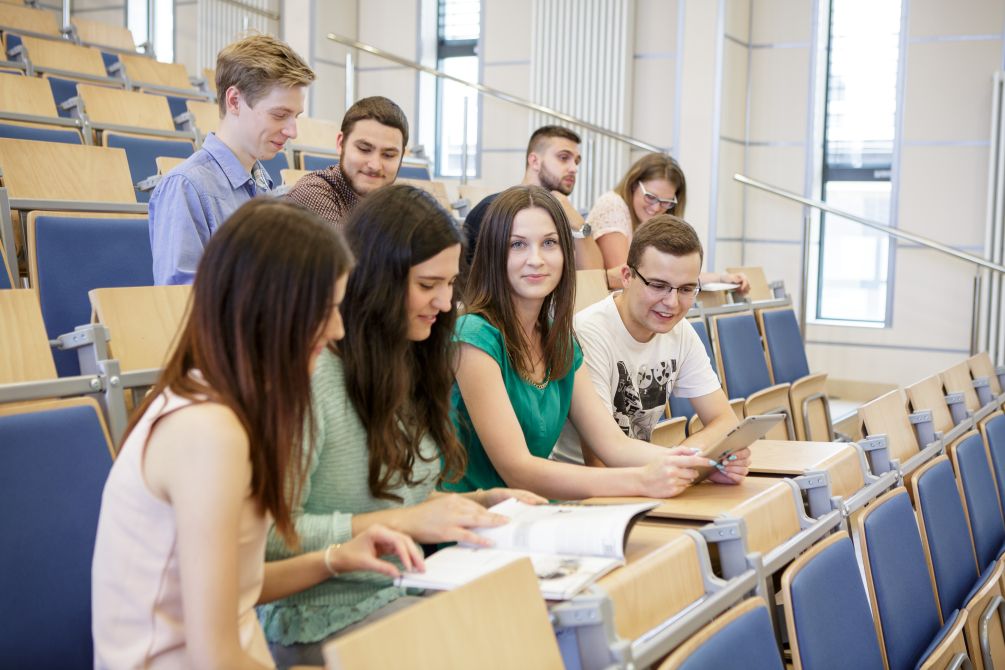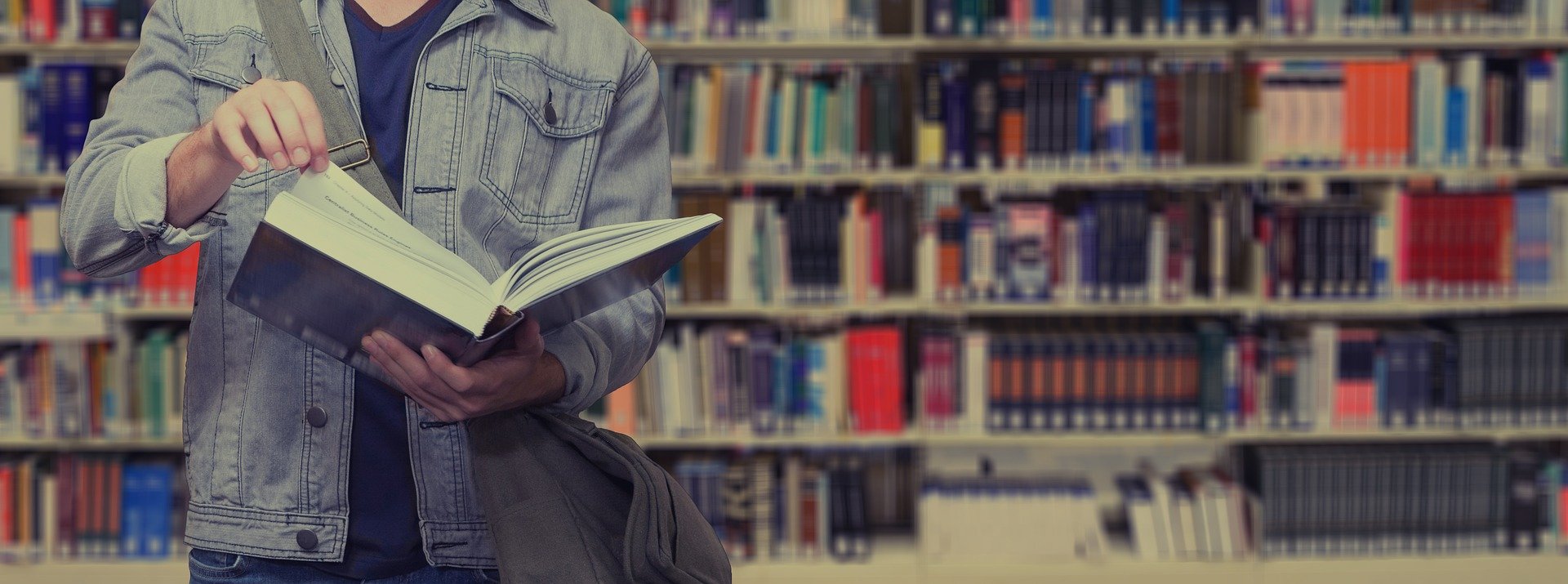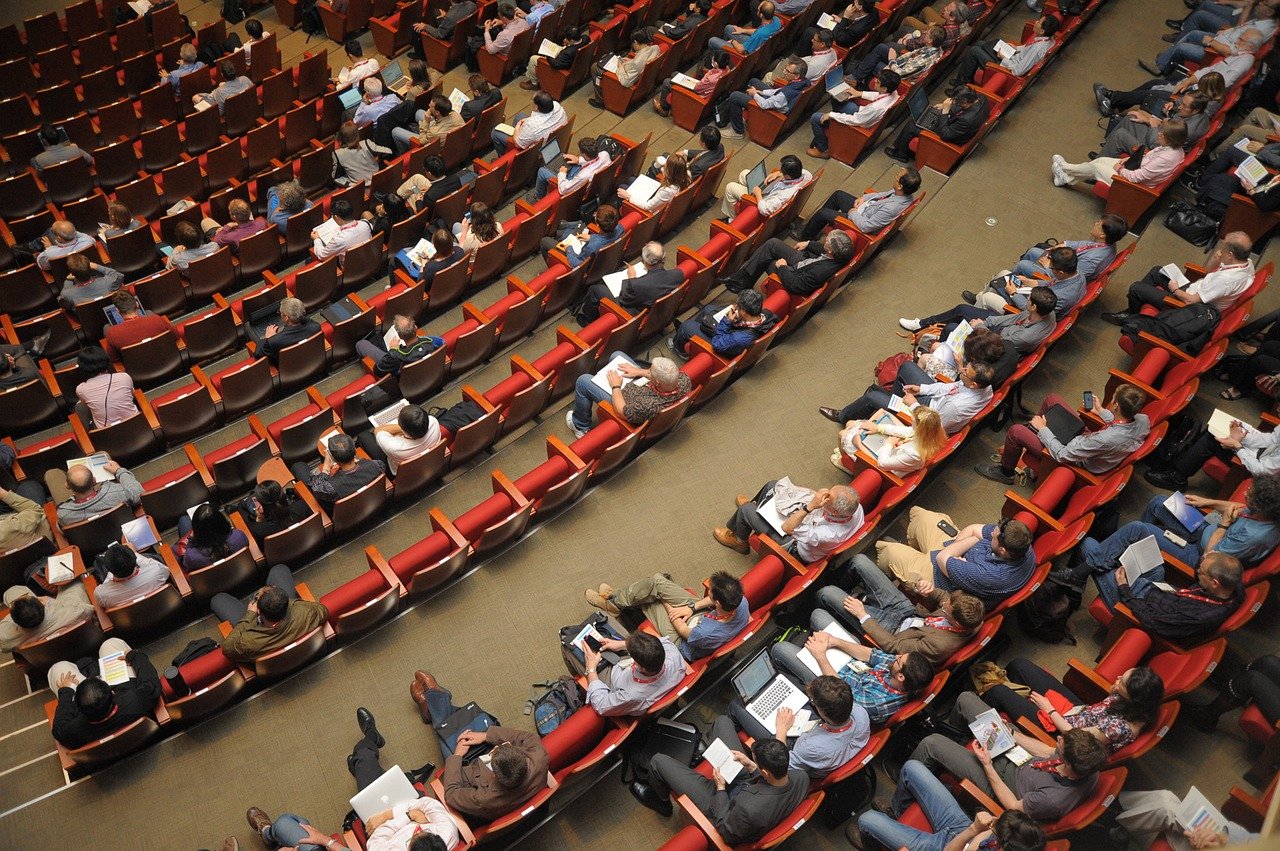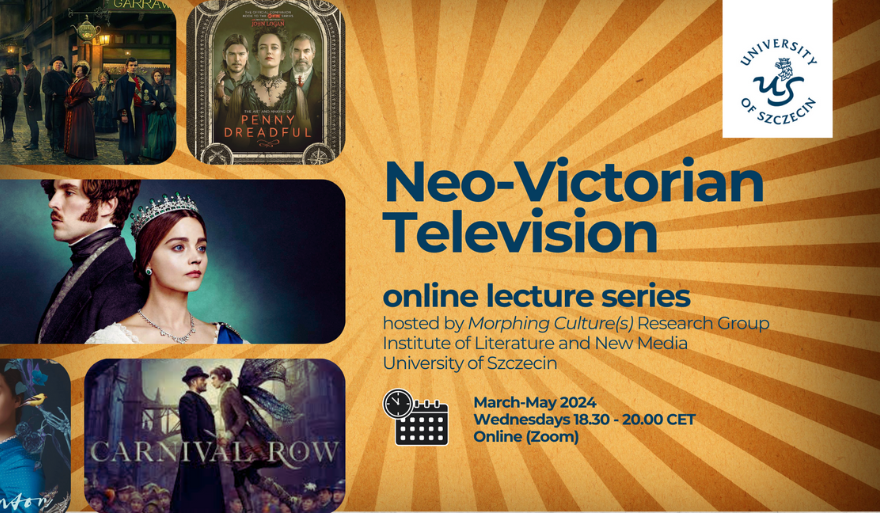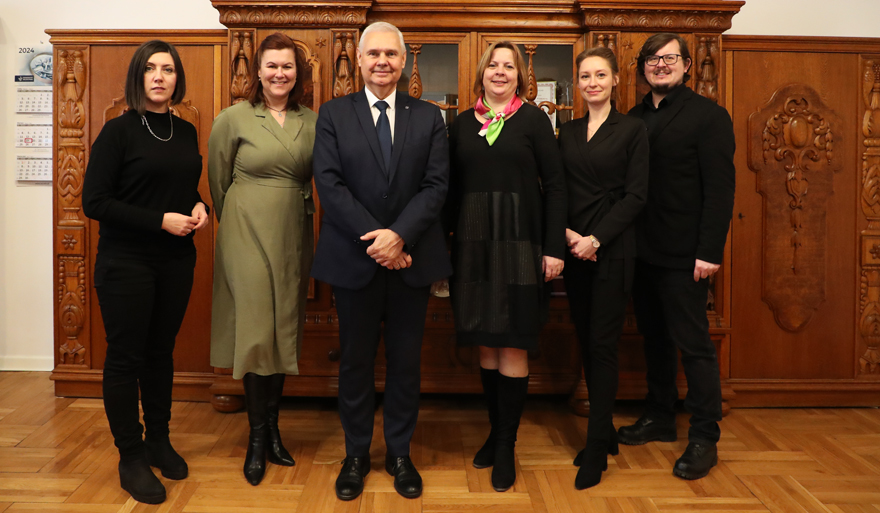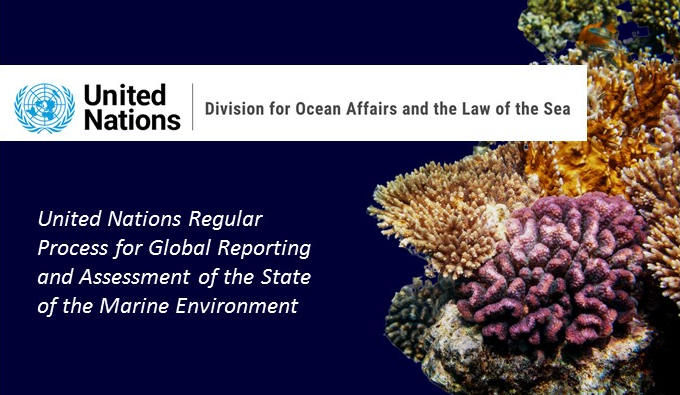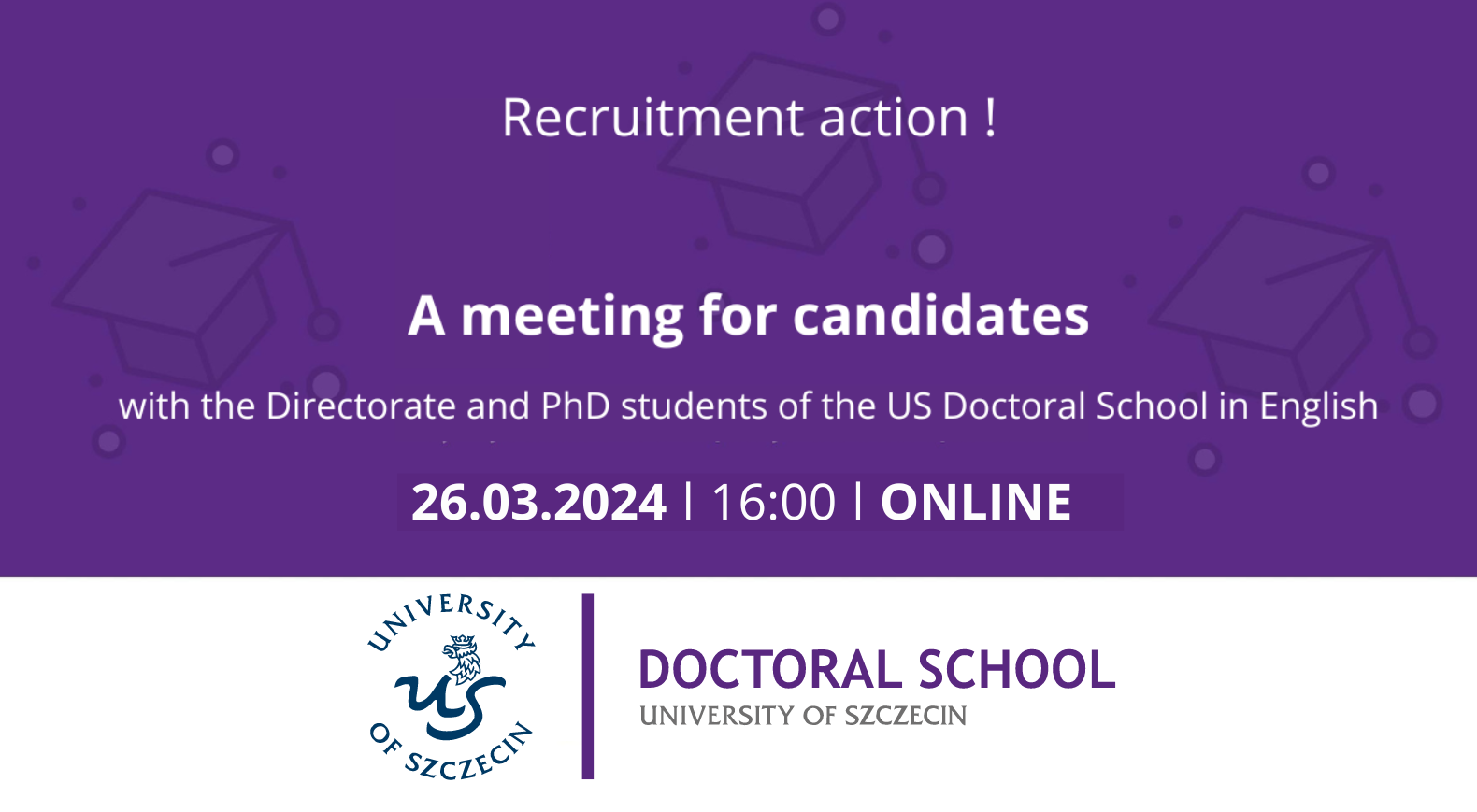The Institute of Physical Culture Sciences started its activity within the structure of the University of Szczecin in 1985. Since the 1990s, the Institute operated within the Faculty of Natural Sciences. In 2011 the Faculty of Physical Culture and Health Promotion was established.
On the 21st of December 2015, the Faculty was granted the right to award the degree of Doctor of Physical Culture Sciences. It is the only university unit in Poland with such qualifications.
The Institute of Physical Culture Sciences has been operating within the new organisational structure of the University of Szczecin since the 1st of October 2019.

Find out more
-
Our Staff
Dr Adrianna Banio
Dr Halina Budis
Beata Buryta, MSc
Dr Maciej Buryta
Dr Rafał Buryta
Assoc. Prof. Monika Chudecka, Prof. of the University of Szczecin
Dr Alicja Drohomirecka
Assoc. Prof. Jerzy Eider, Prof. of the University of Szczecin
Dr Beata Florkiewicz
Dr Anna Iwińska
Dr Jerzy Iwiński
Dr Wojciech Jedziniak
Dr Katarzyna Klapczyńska, MD
Dr Marek Kolbowicz
Dr Dorota Kostrzewa-Nowak
Assoc. Prof. Katarzyna Kotarska, Prof. of the University of Szczecin
Dr Eng. Anna Krajewska-Pędzik
Assoc. Prof. Joanna Kruk, Prof. of the University of Szczecin
Dr Ewa Kruszyńska
Assoc. Prof. Justyna Krzepota
Szymon Kucharski, MSc
Dr Wioletta Łubkowska, Prof. of the University of Szczecin
Assoc. Prof. Agnieszka Maciejewska-Skrendo, Prof. of the University of Szczecin
Dr Kinga Michnik
Dr Jarosław Muracki
Dr Jarosław Nadobnik
Dr Monika Niewiadomska, Prof. of the University of SzczecinProf. Leonard Nowak
Assoc. Prof. Maria Nowak, Prof. of the University of Szczecin
Dr Robert Nowak
Dr Anna Nowakowska, MD
Dr Małgorzata Paczyńska-Jędrycka
Leszek Piasecki, MSc
Prof. Oleksandr Pryimakov
Dr Joanna Ratajczak
Assoc. Prof. Marek Sawczuk, Prof. of the University of Szczecin
Dr Elżbieta Sieńko-Awierianów, Prof. of the University of Szczecin
Radosław Sroka, MSc
Dr Ryszard Stefanik
Assoc. Prof. Marta Stępień-Słodkowska, Prof. of the University of Szczecin
Dr Miłosz Stępiński, Prof. of the University of Szczecin
Adrian Struzik, MSc
Dr Michał Tarnowski
Robert Terczyński, MSc
Assoc. Prof. Danuta Umiastowska, Prof. of the University of Szczecin
Assoc. Prof. Renata Urban, Prof. of the University of Szczecin
Dr Ewa Węgrzyn
Dr Krzysztof Wilk
Dr Maciej Zawadzki
Assoc. Prof. Teresa Zwierko, Prof. of the University of Szczecin -
Our Research
The Institute conducts research in the following areas:
- The use of thermovision, anthropometric and biomechanical method for morphofunctional assessment of athletes and people in various physiological and pathological states;
- Evaluation of structural and functional changes in the human motor system in ontogenesis;
- Analysis of movement biomechanics in aesthetic sports and evaluation of kinematic parameters of dancers’ joints;
- Assessment and forecasting of the reserve capacity of the motion control system with a different coordination structure in the process of long-term adaptation to physical effort;
- Biological monitoring and modelling of athletes’ physical fitness in the process of adaptation to physical effort;
- Searching for and identification of genetic determinants of sports talentsthe risk of injury and the genetic background of the range of responses after training and the speed of regeneration of players after training;
- Evaluation of the metabolic background of physical activity and exercise and the mechanism of development of metabolic and hormonal disorders;
- Designing new profiles for the assessment of biochemical metabolic fatigue in selected sports;
- The role of physical activity in etiology, prevention and treatment of the civilization diseases/
- Understanding the determinants of the course of sensorimotor processes in athletes under conditions of rest and physical exertion and assessment and shaping of the motor skills of people of different age and health status;
- Analysis of the efficiency of perception, decision-making and effector mechanisms that directly determine the effectiveness of motor behaviour;
- The health behaviour and quality of life of people of different ages and the influence of selected factors on human health in holistic perspective;
- Participation in physical activity among children, young people, adults and people with disabilities;
- Local and regional development strategies for sport and recreation;
- Social aspects of physical activity and sport in historical terms.
Research Teams
Biological aspects of sports activities
In the research team there is a group of specialists in the field of effort physiology of sports genetics and physical activity, which is considered as a key element of a healthy lifestyle and as a factor supporting health prophylaxis. The aim of research is:
- Analysis of the biological conditions of motor skills, determining the impact of a single physical effort on the activities of the locomotor system. Assessment of structural and functional changes taking place in the human motor system along with age. Determining the importance of recreational physical activity in counteracting negative changes in the locomotor system in the the aging process.
- Analysis of metabolic background of physical activity, exercise metabolism. Determining the hormonal and metabolic changes occurring with age and assessment of their significance for body function.
- Analysis of the mechanism of development of metabolic and hormonal disorders and assessment of the role of physical activity in counteracting their effects. Assessment of dietary needs and physical activity.
- Analysis of human biological needs, biological determinants of psychomotor performance and methods of assessing psychomotor performance.
- Searching for and identifying genetic determinants of sports talents, giving the possibility to direct people with predispositions to develop their natural physical abilities (motor, physiological and other).
- Analysis of the genetic background of the post-training response range of the athlete’s body and the rate of post-training regeneration, which allows the individualisation of the training process.
- Analysis the likelihood of an injury based on the presence of specific genetic risk factorsmin order to allow the introduction of appropriate prevention.
- The use of thermovision, anthropometric, biomechanical methods and diagnostic survey to assess functional morphology and quality of life of people in various physiological and pathological states. The research is conducted in cooperation with Prof. A. Łubkowska, Department of Health Sciences, Pomeranian Medical University.
- Analysis of morpho-functional characteristics (including somatotype, body composition, selected physiological parameters, hypermobility, muscle strength) and the quality of life of athletes practising various sports disciplines and people at various stages of ontogenesis undertaking physical activity in various physiological and pathological states. The research is carried out in cooperation with Prof. A. Lubkowska, Department of Health Sciences, Pomeranian Medical University.
Research Team Leader: Assoc. Prof. Katarzyna Kotarska, Prof. of the University of Szczecin
Assoc. Prof. Monika Chudecka, Prof. of the University of Szczecin
Assoc. Prof. Agnieszka Maciejewska-Skrendo, Prof. of the University of Szczecin
Assoc. Prof. Marek Sawczuk, Prof. of the University of Szczecin
Dr Rafał Buryta
Dr Katarzyna Klapczyńska
Dr Marek Kolbowicz
Dr Jarosław Muracki
Dr Elżbieta Sieńko-Awierianów
Beata Buryta, MScBiological determinants of health and physical activity
The objective of the research is to strengthen the health of the society by increasing the awareness of the risk factors of civilization diseases and ways of maintaining health in the somatic, mental and social sphere. The research concerns the influence of selected factors on human health in holistic terms, such as the influence of physical activity, sleep, relaxation and proper nutrition on the improvement of human psychophysical condition. The research team conducts research in the fields of: environmental health, nutrition, dogotherapy, recreation, physiology, sport and psychosomatics.
The Research Team Leader: Assoc. Prof. Marta Stępień-Słodkowska, Prof. of the University of Szczecin
Dr Monika Niewiadomska, Prof. of the University of Szczecin
Dr Halina Budis
Dr Eng. Anna Krajewska-Pędzik
Dr Katarzyna Klapczyńska
Dr Małgorzata Paczyńska-Jędrycka
Dr Kinga Michnik
Adrian Struzik, MSc
Szymon Kucharski, MScHistorical and social conditions of physical activity and sport in the world and in Poland
The team conducts research in the field of analysis of social aspects of physical activity and sport in historical terms, interprets social phenomena related to sport and determines their significance for the development of physical culture on a regional and global scale. It undertakes research to show the historical links and place of the Polish Olympic movement in the international Olympic movement, as well as to show the influence of the political situation on the development of physical culture in Poland and its place in the world. The team works on presenting comprehensive conditions for the development of physical education, sport, tourism and recreation in the region, presenting the achievements of Western Pomeranian sportsmen and the possibilities of incorporating the knowledge about these achievements in the process of education of school and academic youth. The team tries to determine the importance of modern technologies for the development of sport in the world and in Poland.
The Research Team Leader: Assoc. Prof. Renata Urban, Prof. of the University of Szczecin
Assoc. Prof. Jerzy Eider, Prof. of the University of Szczecin
Dr Jarosław NadobnikHuman movement in terms of health and physical fitness
The team’s research focuses on the issues of physical activity and motor fitness. The research issues in the area of physical activity include the diagnosis of the level of physical activity, its determinants and health behaviour of people of different ages from the point of view of maintaining health and good quality of life. The research issue in the field of motor fitness concerns the search for opportunities to improve the effectiveness of players at various levels of sports development.
The Reserach Team Leader: Assoc. Prof. Justyna Krzepota
Dr Wioletta ŁubkowskaImmunology, biochemistry and molecular biology of physical effort
Key research projects implemented by the team:
- Analysis of the body’s adaptive response to the applied physical effort and different types of training.
The main objective of the project is to search for biological implications at different levels of the organisation of different types of physical effort in athletes practising different sports disciplines. - Influence of osteoarthritis on the induction of signalling in the cytokine-surface receptor axis of peripheral blood cell components. The main objective of the research is to evaluate changes in signaling between cellular components of the immune system involving chemokines and cytokines as a result endurance or speed exercises.
- Importance of cognitive loads in the development of aseptic inflammation.The main objective of the research is to assess the impact of cognitive loads on the phenomenon of immunomodulation in different age groups of learners and/or active people.
- Designing new profiles for the assessment of biochemical metabolic fatigue in selected sports disciplines.The main objective of the project is to analyse selected biochemical and haematological indicators of post-workout responses in terms of searching for and designing a public panel of studies to assess the degree of effectiveness of restitution in selected sports disciplines.
Research methods and techniques used: Routine biochemical and haematological analyses, analysis of protein levels by means of ELISA and Western-blot technique, analysis of expression of surface antigens and selected proteins released by para- and autocrine flow cytometry, application of spectroscopic methods. Chromatographic (HLPC) and electrophoretic methods are used to analyze selected analytes in body fluids, a wide range of methods is also used to analyze the induction and execution of cell death, the use of molecular biology tools to analyze the expression of genes encoding selected signalling factors and surface antigens, methods of isolation and cryopreservation of peripheral blood cells.
The Research Team Leader: Dr Robert Nowak
Prof. Andrzej Ciechanowicz
Dr Anna Nowakowska, MD
Dr Dorota Kostrzewa-Nowak
Joanna Kubaszewska, MSc Eng.The role of physical activity in health prophylaxis
The practical and theoretical research work of the team focuses on related problems concerning the following:
- The role of physical activity in aetiology, prevention and treatment of the civilization diseases, in particular cancer;
- Analysis of the role of physical activity in preventing psychological stress in people treated for cancer;
- Quality of life determinants;
- Motivating factors for professional sport;
- Changes in the lifestyle of physically active women (since 1995);
- Physical recreation of individual generations in the historical and sociological aspect;
- Taking up physical activity and practising sports by people with disabilities;
- Selected elements of athletes’ lifestyles, including athletes with disabilities.
The Research Team Leader: Assoc. Prof. Joanna Kruk, Prof. of the University of Szczecin
Assoc. Prof. Maria Alicja Nowak, Prof. of the University of Szczecin
Prof. Leonard NowakIndividual Research
Assoc. Prof. Danuta Umiastowska, Prof. of the University of Szczecin
Participation in physical activity among children, young people and adults (monitoring, diagnosis, change).
The objectives are:
- to learn about the participation of children, young people and adults in different forms of physical activity, to get to know the effects of movement and the effectiveness of classes at different stages of education by measuring the level of physical fitness and performance;
- to identify the factors differentiating participation in different forms of movement
Dr Ewa Kruszyńska carries out her individual research in the following research areas:
- Sport and recreation in local and regional development strategies (mass sport),
- Trends and determinants of sport and recreation as a factor in raising the attractiveness and competitiveness of the region,
- Organisation and management of sport and recreation (marketing aspect, promotion of the region, determinants of sport and recreation development),
- Functioning and development of the service sector (sport and recreation infrastructure).
Prof. Oleksandr Pryimakov
- Biological monitoring and modelling of physical fitness of people practising different sports disciplines in the process of adaptation to physical effort at different stages of the training process;
- Assessing and forecasting the back-up capacity of a movement control system with different coordination structures in the process of long-term adaptation to physical effort;
- Model characteristics of the functional preparation structure of athletes in the process of long-term adaptation to physical effort at various stages of the training process.
Prospects for the furthest development of selected directions of scientific research are based on the deepening of comprehensive research aimed at:
a) the furthest development of appropriate criteria for the assessment of physical condition, differentiated according to qualifications, gender, age, preparation period, separate sports disciplines, etc.;
b) solving individual theoretical questions related to the determination of mechanisms of forming an optimal structure of physical fitness of athletes;
c) development and improvement of estimated and forecast models of functional preparation of athletes.
Dr Adrianna Banio
Kinesiology in sports and recreation. Movement analysis, designing training and therapy.
The objective of the latest international project is to evaluate the kinematic parameters of metatarsophalangeal, ankle, knee, hip and spine joints of dancers of different dance styles, as well as to diagnose the pathophysiology resulting from dance technique and the dance shoes used. On this basis, it will be possible to establish standards of dancers’ gait for specific dance styles. This will allow the detection of differences occurring as a result of technical requirements of the dance movement or as a result of compensatory movements of certain diseases affecting professional dancers. This will make it possible to design corrective exercises, treatment methods and orthopaedic equipment for dancers and athletes practising aesthetic sports.
Dr Anna Nowakowska
Regulation of the expression of matrix metalloproteinases in athletes during post-exercise restitution
Dr Joanna Ratajczak
Research on the determinants of obesity in school-age children and the processes of normalizing body weight through psychoeducational activities, physical activity and motivation to change
Dr Ryszard Stefanik
Political and social aspects of the development of sport and teacher education at the universities of physical education in Poland in the years 1945-1989Centre for Human Structural and Functional Research
This research centre consists of four well-equipped scientific laboratories focused on studying \on human motion, in all its aspects, from research at the molecular level (genetic, biochemical research) to systemic physiological and kinesiological research.
Conferences
Aktywność Ruchowa Ludzi w Różnym Wieku/ Physical Activity of Different Age Groups
9-10 December 2021, Szczecin/Małkocin, Poland
More information -
Scientific Board
Chairperson: Assoc. Prof. Renata Urban, Prof. of the University of Szczecin
Members:
Prof. Leonard Nowak
Assoc. Prof. Monika Chudecka, Prof. of the University of Szczecin
Assoc. Prof. Katarzyna Kotarska, Prof. of the University of Szczecin
Assoc. Prof. Joanna Kruk, Prof. of the University of Szczecin
Assoc. Prof. Maria Nowak, Prof. of the University of Szczecin
Assoc. Prof. Marek Sawczuk, Prof. of the University of Szczecin
Assoc. Prof. Marta Stępień-Słodkowska, Prof. of the University of Szczecin
Assoc. Prof. Teresa Zwierko, Prof. of the University of Szczecin
Assoc. Prof. Justyna Krzepota
Dr Maciej Buryta
Dr Rafał Buryta
Dr Katarzyna Klapczyńska, MD
Dr Eng. Anna Krajewska-Pędzik
Dr Ewa Kruszyńska
Dr Jarosław Nadobnik
Dr Małgorzata Paczyńska ‑ Jędrycka
Dr Ryszard Stefanik
Filip Sejbuk (a student) -
Scientific Papers
Ahmetov I., Maciejewska-Karłowska A., Buryta M., Grenda A., Wiażewicz A., Polimorfizm genu PPARA u polskich sportowców z grup dyscyplin siłowych, Prace Instytutu Kultury Fizycznej, 2012, nr 28, 151-159.
Aleksandrowicz M., Klapczyńska K., Kozniewska E., Dysfunction of the endothelium and constriction of the isolated rat’s middle cerebral artery in low sodium environment in the presence of vasopressin. Clinical and Experimental Pharmacology and Physiology, 2020, nr 47 (5), 759-764.
Banio A., Dance as a means of preventing diseases of civilization. Journal of Education, Health and Sport, 2018, vol. 8 no. 8, 1133-1142.
Banio A., Eider J., Verification of special and task-oriented motor test of competitive ballroom dancers at the highest level of advancement, Journal of Kinesiology and Exercise Sciences, 2018, vol. 28 no. 82, 29-34.
Banio A., Influence of rehabilitation on health of ballroom dancers after sports injuries. Central European Journal of Sport Sciences and Medicine, 2016, vol. 14 no. 2, 63-71.
Banio A., The influence of Latin Dance Classes on the Improvement of Life Quality of the Elderly People in Europe. Sustainability, 2020, vol. 12 no. 6.
Biernat E., Krzepota J., Sadowska D., Martial arts as a form of undertaking physical activity in leisure time analysis of factors determining participation of Poles, International Journal of Environmental Research and Public Health, 2018, vol. 15 iss. 9.
Biernat E., Skrok Ł., Krzepota J., Short-term and medium-term impact of retirement on sport activity, self-reported health, and social activity of women and men in Poland, BioMed Research International, 2019, vol. 2019.
Budis H., Kalisińska E., Kosik-Bogacka D., Łanocha N., Sokołowski S., Dobiecki K., Kolodziej L., Bohatyrewicz A., The concentration of manganese, iron and strontium elements in bones of the hip joint from patients after hip replacement surgery, Journal of Trace Elements in Medicine and Biology, 2014; 28, 39-44.
Buryta R., Zwierko T., Jedziniak W., Florkiewicz B., Stępiński M., Kostrzewa-Nowak D., Nowak R., Popowczak M., Woźniak J., Oculomotor dynamics in skilled soccer players. European Journal of Sport Science, 2019, 19(5), 612-620.
Chudecka M., Łubkowska A., Temperature changes of selected body’s surfaces of handball players in the course of training estimated by thermovision, and the study of the impact of physiological and morphological factors on the skin temperature Journal of Thermal Biology, 2010, 35(8), 379-385
Chudecka M., Łubkowska A., Thermal maps of young women and men, Inphrared Physic & Technology, 2015, 69, 81-87.
Chudecka M., Łubkowska A., Leźnicka K., Krupecki K., The use of thermal imaging in the evaluation of the symmetry of muscle activity in various types of exercises (symmetrical and asymmetrical), Journal of Human Kinetics, 2015, 49, 141-147.
Dzięciołowska-Baran E., Mularczyk M., Gawlikowska-Sroka A., Michnik K., Rębacz-Maron E., Analysis of eating behavior and heating habits, body mass index and waist-to-hip ratio In association with spirometry results of young adults” Anthropological Review, Polish Anthropological Society, 2017, 80 (2), 165-170.
Eider J. (red.), Wybrane zagadnienia olimpijskie w teorii i praktyce, Wydawnictwo Naukowe Uniwersytetu Szczecińskiego, Szczecin 2015.
Eider J., Gradutes of the University of Szczecin in the group of trainers who stand as a candidate for the polish representation of the 32nd Olimpics or the 16th Tokyo Paralympics 2020, Central European Journal of Sport Sciences and Medicine, 2019, 3, 65-73.
Eider J., Eider P., Problematyka olimpijska i paraolimpijska w działalności Wydziału Kultury Fizycznej i Promocji Zdrowia Uniwersytetu Szczecińskiego, Wydawnictwo Naukowe Uniwersytetu Szczecińskiego, Szczecin 2017.
Eider J., Eider P., Olimpijczycy i paraolimpijczycy województwa zachodniopomorskiego Londyn 2012, Zapol, Szczecin 2012.
Eider J., Students of the Uniwersity of Szczecin as candidates for the Olimpic or Paralympic Games Tokyo 2020, Central European Journal of Sport Sciences and Medicine, 2019, 2, 67-76.
Eider J., Urban R. (red.), Bohaterowie igrzysk. Biografie zbiorowe i indywidualne polskich olimpijczyków, Uniwersytet Szczeciński Wydział Kultury Fizycznej i Promocji Zdrowia, Szczecin 2016.
Eider J., Wydział Kultury Fizycznej i Promocji Zdrowia Uniwersytetu Szczecińskiego w latach 2011-2016, Wydawnictwo Naukowe Uniwersytetu Szczecińskiego, Szczecin 2017.
Fedotovskaya O., Cięszczyk P., Leońska-Duniec A., Buryta M., Grenda A., Wiażewicz A., Rola i znaczenie polimorfizmu R577X w genie ACTN3 u polskich wioślarzy o wysokich kwalifikacjach, Prace Instytutu Kultury Fizycznej, 2012, 28, 15-25.
Florkiewicz B., Fogtman S., Lesiakowski P., Zwierko T., The effect of visual perception training on sensorimotor function in handball players, Antropomotoryka. Journal of Kinesiology and Exercise Sciences, 2015, 69 (25), 21-28.
Goliński D., Muracki J., Wolański P., Klich S., Murawska-Ciałowicz E., Small-sided soccer game (1V1) in goalkeepers’ training, Central European Journal of Sport Sciences and Medicine, 2016, nr 4 (16), 111-118.
Gralak R., Muczyński B., Terczyński R., Concept of an augmented virtuality marine simulator. Zeszyty Naukowe Akademii Morskiej w Szczecinie, 2016, 45, 60-68.
Iermakov S., Sawczuk M., Buryta M., Grenda A., Wiażewicz A., Polimorfizm genu ADRB1 u polskich zapaśników, Prace Instytutu Kultury Fizycznej, 2012, 28, 41-48.
Ignasiak Z, Sebastjan A., Sławińska Skrzek A., Czarny W., Król P., Rzepko M., Duda-Biernacka B., Marchewka A., Nowacka-Dobosz S., Dobosz J., Umiastowska D., Functional fitness normative values for elderly polish population, MC Geriatrics, 2020, 20:384 .
Jedziniak W., Florkiewicz B., Zwierko T., Analysis of visual strategies in highly-qualified handball players during the performance of penalty throws Antropomotoryka, Journal of Kinesiology and Exercise Sciences , 2016, JKES 74 (26), 55-62.
Jedziniak, W., Lesiakowski, P., Zwierko T., Oculomotor Control in Amputee Soccer Players, Adapted Physical Activity Quarterly 2020, 37 (1), 41-55.
Kalisińaka E., Lanocha-Arendarczyk N., Kosik-Bogacka D., Budis H., Podlasinska J., Popiolek M., Pirog A., Jedrzejewska E., Brains of native and alien mesocarnivores in biomonitoring of toxic metals in Europe. PLOS ONE 2016, 11(8).
Kalisińska E., Budis H., Manganese Mn., Mammals and birds as bioindicators of trace element contaminations in terrestrial environments: an ecotoxicological assessment of the northern hemisphere, red. Kalisińska E., Cham: Springer, 2019.
Kalisińska E., Łanocha-Arendarczyk N., Kosik-Bogacka D., Budis H., Pilarczyk B., Tomza-Marciniak A., Podlasińska J., Cieślik Ł., Popiołek A. E. M., Muscle mercury and selenium in fishes and semiaquatic mammals from a selenium-deficient area. Ecotoxicology and Environmental Safety 136, 24-30.
Kantanista A., Glapa A., Banio A., Firek W., Ingarden A., Malchrowicz-Mośko E., Markiewicz P., Płoszaj K., Ingarden M., Maćkowiak Z., Body image of highly trained female athletes engaged in different types of sport, BioMed Research International, 2018, 2018.
Kawczyński A., Muracki J., Boudreau S. A., Location and occurrence of joint and musculoskeletal pain in football goalkeepers during a 5-day training camp, 22nd Annual Congress of the European College of Sport Science, 5th-8th July 2017, MetropolisRuhr – Germany: book of abstracts / ed. by A. Ferrauti, P. Platen, E. Grimminger-Seidensticker et al., 360-361.
Kostrzewa-Nowak D., Ciechanowicz A., Clark Jeremy S.C., Nowak R., Damage-Associated Molecular Patterns and Th-Cell-Related Cytokines Released after Progressive Effort. Journal of Clinical Medicine 2020, 9(3), 876.
Kostrzewa-Nowak D., Kubaszewska J., Nowakowska A., Nowak R., Effect of Aerobic and Anaerobic Exercise on the Complement System of Proteins in Healthy Young Males, Journal of Clinical Medicine 2020, 9(8), 2357.
Kostrzewa-Nowak D., Nowak R., Analysis of selected T cell subsets in peripheral blood after exhaustive effort among elite soccer players, Biochemia Medica 2018, 28(3), 030707, 446-455.
Kostrzewa-Nowak D., Nowak R., T helper cell-related changes in peripheral blood induced by progressive effort among soccer players. PLoS ONE 2020; 15(1): e0227993.
Kostrzewa-Nowak D., Nowakowska A., Zwierko T., Rybak M., Nowak R., The influence of a health-related fitness training program on motor performance as well as hematological and biochemical parameters, International Journal of Environmental Research and Public Health 2020, 17, 578.
Kotarska K., Nowak L., Szark-Eckardt M., Nowak M.A., Intensity of Health Behaviors In People Who Practice Combat Sports And Martial Arts, International Journal of Environmental Research and Public Health, 2019, 16, 2463.
Kotarska K., Nowak L., Szark-Eckardt M., Nowak M.A., Selected Healthy Behaviors and the Quality of Life in People Who Practice Combat Sports and Martial Arts, International Journal of Environmental Research and Public Health, 2019, 16 (14), 875-887.
Kotarska K., Nowak L., Szark-Eckardt M., Nowak M.A., Motivational effect of objectives in practicing karate, boxing, football and wheelchair basketball, Archives of Budo, 2020, 16, 27-41.
Kotarska K., Nowak L., Szark-Eckardt M., Nowak M.A., Selected healthy behaviors and quality of life in people who practice combat sports and martial arts, International Journal of Environmental Research and Public Health, 2019, 16(5), 875.
Krajewska-Pędzik A., Ratajczak J., Stępień-Słodkowska M., Ocena związku aktywności fizycznej z wybranymi parametrami antropometrycznymi i wentylacyjnymi w okresie wczesnej stabilizacji organizmu, Aktywność ruchowa ludzi w różnym wieku, 25, 1/2015, 27-32.
Kruk J., Aboul-Enein B.H., Bernstein J., Gronostaj M., Psychological stress and cellular aging in cancer: A meta-analysis, Oxidative Medicine and Cellular Longevity, 2019, Article ID 1270397, 23 pages.
Kruk J., Aboul-Enein H.Y., Reactive oxygen and nitrogen species in carcinogenesis: Implications of oxidative stress on the progression and development of several cancer types, Mini-Reviews in Medicinal Chemistry, 2017, 17(11), 904-919.
Kruk J., Health and economic costs of physical inactivity, Asian Pacific Journal of Cancer Prevention, 2014, 15 (18), 7499-7503.
Kruk J., Kotarska K., Aboul-Enein B.H., Physical exercise and catecholamines response: benefits and health risk: possible mechanisms, Free Radical Research, 2020, 54(2-3), 105-125.
Kruk J., Self-reported psychological stress and the risk of breast cancer: A case-control study, Stress – The International Journal on the Biology of Stress, 2012, 15 (2), 162-171.
Kruszyńska E., Jančoková Ľ., Sieńko-Awierianów E., Evaluation of the possibility to use sport and recreation facilities in Poznań, Ekonomiczne Problemy Turystyki, 2018, 3 (43), 115-124.
Kruszyńska E., Ocena skuteczności działania programu strategicznego “Sportowy Poznań” prowadzonego przez Urząd Miasta Poznania w opinii usługodawców, Sport i turystyka w perspektywie nauk społecznych: tradycja i współczesność / red. n. Zowisło M. i Kosiewicz J., Akademia Wychowania Fizycznego im. Bronisława Czecha w Krakowie, przy współudziale Polskiego Towarzystwa Nauk Społecznych o Sporcie. Monografia, Akademia Wychowania Fizycznego im. Bronisława Czecha, nr 43.
Kruszyńska E., Jančoková Ľ., Sieńko-Awierianów E., Functioning of sport and recreation facilities of the city of Poznań in the opinion of service providers, Ekonomiczne Problemy Transportu, 2018, 4 (44), 157-167.
Kruszyńska E., Poczta J., Difficulties Limiting Access to Sports and Recreational Facilities in the City in the Perceptions of Service Users. Sports and Recreational Infrastructure Management Policy—Poznan Case Study, International Journal of Environmental Research and Public Health, 2020, 17, 1768.
Kruszyńska E., Poczta J., Hierarchy of Factors Affecting the Condition and Development of Sports and Recreation Infrastructure—Impact on the Recreational Activity and Health of the Residents of a City (Poznan Case Study), International Journal of Environmental Research and Public Health, 2019, 16, 556.
Krzepota J., Sadowska D., Kwestionariusz aktywności fizycznej kobiet w ciąży: wersja polska (PPAQ-PL), Medycyna Ogólna i Nauki o Zdrowiu, 2017, 23 (2), 100-106.
Krzepota J., Zwierko T., Puchalska-Niedbał L., Markiewicz M., Florkiewicz B., Lubiński W., The efficiency of a visual skills training program on visual search performance, Journal of Human Kinetics, 2015, 46, 231-240.
Lanocha-Arendarczyk N., Kosik-Bogacka D.I., Kalisinska E., Sokolowski S., Kolodziej L., Budis H., Safranow K., Kot K., Ciosek Z., Tomska N., Galant K., Influence of environmental factors and relationships between vanadium, chromium, and calcium in human bone, BioMed Research International, 2016.
Łubkowska A., Szymański S., Chudecka M., Surface Body Temperature of Full-Term Healthy Newborns Immediately after Birth—Pilot Study, Int. J. Environ. Res. Public Health, 2019, 16(8), 1312.
Lulińska E., Gibbon A., Kaczmarczyk M., Maciejewska-Skrendo A., Ficek K., Leońska-Duniec A., Wilk M., Leźnicka K., Michałowska-Sawczyn M., Humińska-Lisowska K., Buryta R., Cięszczyk P., Maculewicz E., Czarny W., September AV., Sawczuk M., Matrix Metalloproteinase Genes (MMP1, MMP10, MMP12) on Chromosome 11q22 and the Risk of Non-Contact Anterior Cruciate Ligament Ruptures. Genes (Basel), 2020, 11(7), 766.
Lulińska-Kuklik E., Maculewicz E., Moska W., Ficek K., Kaczmarczyk M., Michałowska-Sawczyn M., Humińska-Lisowska K., Buryta M., Chycki J., Cięszczyk P., Żmijewski P., Rzeszutko A., Sawczuk M., Stastny P., Petr M., Maciejewska-Skrendo A., Are IL1B, IL6 and IL6R Gene Variants Associated with Anterior Cruciate Ligament Rupture Susceptibility?, J Sports Sci Med, 2019, Feb 11, 18(1), 137-145.
Lulińska-Kuklik E., Rahim M., Moska W., Maculewicz E., Kaczmarczyk M., Maciejewska-Skrendo A., Ficek K., Cieszczyk P., September AV., Sawczuk M., Are MMP3, MMP8 and TIMP2 gene variants associated with anterior cruciate ligament rupture susceptibility?, J Sci Med Sport, 2019, Jul 22(7), 753-757.
Łubkowska W., The effects of aquatic therapy on the musculoskeletal rehabilitation: a systematic review, in: “Mozgással az egészségért” a fizikai aktivitás jelentősége a jövő munkavállalóinak egészségmegőrzésében Nemzetközi Konferencia és Workshop, eds. Bácsné, Bába É., Müller A., University of Debrecen. Faculty of Economisc and Business. Department of Sports Management. Debrecen: Debreceni Egyetem, 2019, 24-36.
Łubkowska W., Mroczek B., Współczesne kierunki rehabilitacji w zespołach bólowych kręgosłupa lędźwiowo-krzyżowego: przegląd systematyczny, Pomeranian Journal of Life Sciences, 2018, 64 (3), 152-160.
Łubkowska W., Szark-Eckardt M., Korygowanie postawy ciała poprzez pływanie i ćwiczenia w wodzie, Bydgoszcz: Centrum Promocji i Reklamy Remedia, 2015.
Łubkowska W., Zdeb T., Mroczek B., Ocena ukształtowania fizjologicznych krzywizn kręgosłupa dziewcząt trenujących sport pływacki i nie uprawiających pływania, Family Medicine & Primary Care Review, 2015, 17 (3), 189-192.
Maciejewska-Skrendo A., Buryta M., Czarny W., Król P., Stastny P., Petr M., Safranow K., Sawczuk M., The Polymorphisms of the Peroxisome-Proliferator Activated Receptors’ Alfa Gene Modify the Aerobic Training Induced Changes of Cholesterol and Glucose, J Clin Med. 2019, Jul 17, 8(7). pii: E1043.
Maciejewska-Skrendo A., Cięszczyk P., Chycki J., Smółka W., Sawczuk M., Genetic Markers Associated with Power Athlete Status, J Hum Kinet, 2019, Aug 21, 68, 17-36.
Maciejewska-Skrendo A., Leźnicka K., Leońska-Duniec A., Wilk M., Filip A., Cięszczyk P., Sawczuk M., Genetics of Muscle Stiffness, Muscle Elasticity and Explosive Strength, J Hum Kinet, 2020, 74, 143-159.
Mazur Z., Umiastowska D., Przeciwdziałanie wykluczeniu osób starszych przez wspieranie ich aktywności fizycznej i rozwijanie umiejętności cyfrowych, Wydawnictwo Texter, Warszawa 2017.
Michnik K., Stępień-Słodkowska M., Czachowski J., Michnik M., Ustianowski P., Krajewska-Pędzik A., Physical fitness of professional soldiers-cross-cutting research over several years, w: Praca i czas wolny w kontekście zdrowia funkcjonariuszy grup dyspozycyjnych, pod red. Kaiser A, Monografie PTNKF, AWF Poznań, 2017, 119-130.
Mroczek B., Łubkowska W., Jarno W., Jaraczewska E., Mierzecki A., Occurrence and impact of back pain on the quality of life of healthcare workers, Annals of Agricultural and Environmental Medicine, 2020, 27(1), 36-42.
Muczyński B., Terczyński R., Gucma L., Evaluating the measurement accuracy of laser distance meters for the purpose of PNDS system construction, Zeszyty Naukowe Akademii Morskiej w Szczecinie 2012, 32, 131-137.
Muracki J., Kumorek M., Kisilewicz A., Pożarowszczyk B., Larsen D. B., Kawczyński A., Boudreau S., Practical use of the navigate pain application for the assessment of the area, location, and frequency of the pain location in young soccer goalkeepers, Journal of Human Kinetics 2019, 69, 125-135.
Nadobnik J., The use of selected social media: Instagram to promote physical activity and a pro-health lifestyle, Studies in Sport Humanities, 2018, 24, 33-38.
Niewiadomska M., Forms of Acitvities with a dog as modern types of physical recreation, Central Europen Journal of Sport Sciences and Medicine, 2018, 23 (3), 53-58.
Niewiadomska M., Makris M., Radziievskyi V., Dogoterapia jako forma aktywności fizycznej wspomagająca rehabilitację dzieci, Monografia WSEiT, Współczesne wyzwania fijoterapii, Poznań, 2015.
Nowak L., Nowak M.A., Światowe Letnie i Zimowe Igrzyska Polonijne w Polsce w latach 1934-2018, w: Olimpizm Polski: na stulecie Polskiego Komitetu Olimpijskiego, red. nauk. Lipiec J., Kraków-Warszawa: Polski Komitet Olimpijski, 2019.
Nowak M. A., Kotarska K., Nowak L., Physical activity, health and physical fitness of students, their parents and grandparents, Collegium Antropologicum, 2019, 43(1), 1-10.
Nowakowska A., Kostrzewa-Nowak D., Buryta R., Nowak R., Blood Biomarkers of Recovery Efficiency in Soccer Players, Int. J. Environ. Res. Public Health, 2019, 16(18), 3279.
Nowakowska A., Tarasiuk J., Comparative effects of selected plant polyphenols, gallic acid and epigallocatechin gallate, on matrix metalloproteinases activity in multidrug resistant MCF7/DOX breast cancer cells, Acta Biochim Pol. 2016; 6, 571-5.
Paczyńska-Jędrycka M., Animation of free time and support for psychomotor development of infants aged over 3 months, Central European Journal of Sport Sciences and Medicine, 2020, 29 (1), 65-75.
Paczyńska-Jędrycka M., Edukacja olimpijska w przedszkolach, w: Eider J, Urban R, editors. Studia z teorii i praktyki sportu i ruchu olimpijskiego, Szczecin: Polskie Towarzystwo Naukowe Kultury Fizycznej. Sekcja Historii, 2017, 91-103.
Paczyńska-Jędrycka M., Eider P., Edukacja zdrowotna w kontekście ścieżki zdrowia i animacji czasu wolnego. Handel Wewnętrzny. 2017, 63, 4 (369), 366-376.
Paczyńska-Jędrycka M., Frąckowiak P., Łubkowska W., Leisure time animation in the context of rehabilitation of juveniles in youth detention centres, Central European Journal of Sport Sciences and Medicine, 2014, 8 (4), 115-122.
Paczyńska-Jędrycka M., Łubkowska W., Edukacja zdrowotna przez gry i zabawy ruchowe z uwzględnieniem zabaw animacyjnych w opinii studentek pedagogiki elementarnej. Pielęgniarstwo Polskie, 2014, 3 (53), 215-221.
Petr M., Maciejewska-Skrendo A., Zajac A., Chycki J., Stastny P., Association of Elite Sports Status with Gene Variants of Peroxisome Proliferator Activated Receptors and Their Transcriptional Coactivator, International Journal of Molecular Science, 2020, 21, 162.
Pryimakov O., Iermakov S., Eider J., Prysiazhniuk S., Mazurok N., Physiological criteria of functional fitness and determinants of physical work capacity of highly skilled wrestlers, Physical Education of Students, 2020, 24(4), 205-212.
Pryimakov O., Interaction mechanisms of muscular and cardiovascular systems of elite cyclists in different physiological states during a muscular activity, Journal of Physical Education and Sport® (JPES) 2020, 20 (2), 729-735.
Sadowska D., Krzepota J., Klusiewicz A., Postural balance and rifle stability in a standing shooting position after specific physical effort in biathletes, Journal of Sports Sciences, 2019, 37 (16), 1892-1898.
Sadowska D., Lichota M., Sacewicz T., Krzepota J., Influence of running phases on the postural balance of modern pentathlon athletes in a laser run event, International Journal of Environmental Research and Public Health, 2019, 16 (22), 4440.
Sieńko-Awierianów E., Chudecka M., Risk of Injury in Physically Active Students: Associated Factors and Quality of Life Aspects, International Journal of Environmental Research and Public Health, 2020, 17(7), 2564.
Sieńko-Awierianów E., Lubkowska A., Kolano P., Chudecka M., Postural stability and risk of falls per decade of adult life – a pilot study, Anthropological Review, 2018, 81 (1), 102-109.
Stefanik R., Futbol w cieniu komitetów: piłka nożna a władza w województwie szczecińskim w latach 1945-1989, Instytut Pamięci Narodowej – Komisja Ścigania Zbrodni przeciw Narodowi Polskiemu, Oddział w Szczecinie, Szczecin 2016.
Stępień-Słodkowska M., Ficek K., Ziętek P., Kaczmarczyk M., Łubkowska W., Szark-Eckardt M., Cięszczyk P., Is the combination of COL1A1gene polymorphisms a marker of injury risk? Journal of Sport Rehabilitation, 2017, 26 (3), 234-238.
Stępień-Słodkowska M., Rataj M., Krajewska-Pędzik A., Stosowanie suplementów diety przez osoby ćwiczące w siłowniach i klubach fitness, Szkice Humanistyczne, 2017, 2 (43), 83-94.
Stępień-Słodkowska M., Ustianowski P., Starkowska A., Kotarska K., Evaluation of the quality of sleep of the professional soldiers population, Central European Journal of Sport Sciences and Medicine, 2017, 17 (2), 57-66.
Terczyński R., Próba podziału niepewności i błędów pomiarowych w pomiarach dokonywanych dla potrzeb kultury fizycznej, Prace młodych pracowników nauki Uniwersytetu Szczecińskiego, Szczecin 1999, 38-41.
Terczyński R., Rozkład prędkości w biegu na 100 metrów na różnym poziomie sportowym, Sport and Tourism in Modern Lifestyl, Monografie AWF 2009, Poznań, 393, 35-42.
Terczyński R., The influence of sprint block start elements on initial velocity of 100 metre race, Central Journal of Sport Science and Medicine, 2014, 8 (4), 87-96.
Terczyński R., Historia pomiaru czasu na igrzyskach olimpijskich, Wybrane zagadnienia olimpijskie w teorii i praktyce, Uniwersytet Szczeciński 2015, 59-73.
Umiastowska D., Domańska U., Contemporary threats to professional sport resulting from beginning specialist training too early, Journal of Kinesiology and Exercise Sciences, 2019, 29 (86), 29-35.
Umiastowska D., Kompetencje nauczyciela wychowania fizycznego we współczesnej szkole, w: Współczesne problemy wychowania fizycznego, część 3, Wydawnictwo Akademii Wychowania Fizycznego, Katowice 2019, 53-65.
Umiastowska D., Kupczyk J., Factors differentiating the level of functional fitness in Polish seniors, Int. J. Environ. Res. Public Health, 2020, 17(5), 1699.Urban R., Zarys dziejów Akademickiego Związku Sportowego w Szczecinie w latach 1946-2017, Wydawnictwo Nauka i Innowacje, Poznań 2019.
Wolański P., Muracki J., Goliński D., Nosal J., Murawska-Ciałowicz E., Wydatek energetyczny ponoszony przez zawodników podczas meczów w piłkę nożną halową (Futsal) [Dokument elektroniczny], w: Interdyscyplinarność współczesnej rehabilitacji, t.1, pod red. Paprockiej-Borowicz M., Jarząba S., Kuciel-Lewandowskiej J., Katedra Fizjoterapii, Uniwersytet Medyczny im. Piastów Ślaskich, Wrocław 2016, 161-166.
Wolański P., Muracki J., Goliński D., Nosal J., Bakońska-Pacoń E., Murawska-Ciałowicz E., The intensity and energy expenditure of exertions, restitution speed, and rate of perceived exertion after tournament matches in Polish futsal players, Human Movement, 2017, 18 (1), 58-66.
Zmijewski P., Cięszczyk P., Ahmetov II., Gronek P., Lulińska-Kuklik E., Dornowski M., Rzeszutko A., Chycki J., Moska W., Sawczuk M., The NOS3 G894T (rs1799983) and -786T/C (rs2070744) polymorphisms are associated with elite swimmer status, Biol Sport, 2018, 35(4), 313-319.
Zwierko T., Florkiewicz B., Fogtman S., Kszak-Krzyżanowska A., The ability to maintain attention during visuomotor task performance in handball players and non-athletes, Central European Journal of Sport Sciences and Medicine, 2014, 7 (3), 99-106.
Zwierko T., Jedziniak W., Ceylan H.I., Florkiewicz B., Lesiakowski P., Śliwiak M., Kirkiewicz M., Lubiński W., The Consequences of Glaucoma on Mobility and Balance Control in the Older Adults: A Cross-Sectional Study, Journal of Aging and Physical Activity 2020.
Zwierko T., Jedziniak W., Florkiewicz B., Stępiński M., Buryta R., Kostrzewa-Nowak D., Nowak R., Popowczak M., Woźniak J., Oculomotor dynamics in skilled soccer players: The effects of sport expertise and strenuous physical effort, European Journal of Sport Science, 2019, 19(5), 612-620.
Zwierko T., Jedziniak W., Lesiakowski P., Śliwak M., Kirkiewicz M., Lubiński W., Eye-hand coordination impairment in glaucoma patients. International Journal of Envronmental Research and Public Health, 2019, 16 (22), 4332.
Zwierko T., Lubiński W., Lesiakowski P., Steciuk H., Piasecki L., Krzepota J., Does athletic training in volleyball modulate the components of visual evoked potentials? A preliminary investigation, Journal of Sports Sciences, 2014, 32(16), 1519-1528.
Zwierko T., Lubiński W., Lubkowska A., Niechwiej-Szwedo E., Czepita D., The effect of progressively increased physical efforts on visual evoked potentials in volleyball players and non-athletes, Journal of Sports Sciences, 2011, 29(14), 1563-1572.
Zwierko T., Jedziniak W., Florkiewicz B., Ceylan H. İ., Lesiakowski P., Śliwiak M., Kirkiewicz M., & Lubiński W., The Consequences of Glaucoma on Mobility and Balance Control in the Older Adults: A Cross-Sectional Study, Journal of Aging and Physical Activity, 2020, 1(aop), 1-10.
Żwierełło W., Maruszewska A., Skórka-Majewicz M., Goschorska M., Baranowska-Bosiacka I., Dec K., Styburski D., Nowakowska A., Gutowska I., The influence of polyphenols on metabolic disorders caused by compounds released from plastics – review, Chemosphere, 2020; 240: 124901.
-
Contact information




